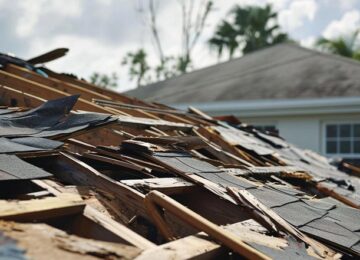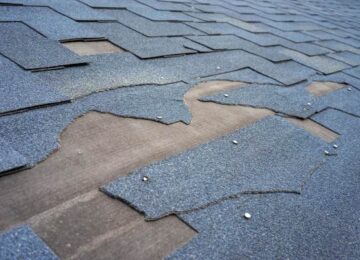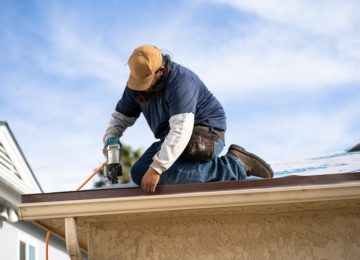When it comes to protecting your home, few things are as crucial as a strong and watertight roof. Yet, roof leaks remain one of the most common and frustrating issues homeowners face—especially in areas like St. Petersburg, where Florida’s heavy rains, humidity, and tropical storms constantly put roofing systems to the test. Understanding why leaks happen and how to fix them can save you thousands in potential repair costs and prevent more serious structural damage down the line.
Why Roof Leaks Are So Common
1. Aging Roof Materials
Over time, roofing materials naturally deteriorate due to constant exposure to the sun, wind, and rain. Asphalt shingles may lose their granules, metal roofs can corrode, and tiles may crack or shift. Once the roofing surface weakens, water can easily seep through, leading to leaks and moisture buildup inside your home.
2. Poor Roof Installation
Even the best roofing materials can fail if not installed properly. Inadequate sealing, improper flashing placement, or shortcuts taken during installation can all contribute to early roof failure. Many homeowners experience leaks not because of the roof’s age, but because of an installation done without attention to detail.
3. Damaged or Missing Shingles
Florida’s strong winds and storms can dislodge shingles, exposing the underlayment beneath. Once that barrier is compromised, it’s only a matter of time before rain finds its way inside. Missing or curled shingles often go unnoticed until the leak has already caused interior damage.
4. Clogged Gutters and Poor Drainage
Gutters play a vital role in directing rainwater away from your roof. When leaves, dirt, and debris clog them, water starts pooling around vulnerable areas like flashing or roof valleys. That standing water can eventually penetrate through, resulting in leaks and rot.
5. Faulty Flashing or Roof Penetrations
Any point where your roof has openings—like vents, skylights, or chimneys—is prone to leaking if the flashing isn’t installed or sealed correctly. These areas are often the first to show signs of wear and tear, especially after harsh weather conditions.
How to Fix Roof Leaks Effectively
1. Inspect and Identify the Source
The first step is locating where the leak is coming from. Water stains on ceilings, mold growth, or a musty odor in the attic are common indicators. However, the actual leak may not always be directly above the visible damage—it could have traveled from another area of the roof.
2. Replace Damaged Shingles or Tiles
If shingles are cracked, missing, or curling, replacing them promptly prevents water from infiltrating deeper into your roof layers. This small repair can make a huge difference in preventing further damage.
3. Reseal Flashing and Roof Penetrations
Flashing around chimneys, skylights, and vents should be checked and resealed if necessary. Using high-quality roofing sealant or flashing tape can reinforce weak points and prevent moisture intrusion.
4. Clean and Maintain Gutters Regularly
Routine gutter cleaning ensures water flows freely off the roof. You can also install gutter guards to minimize debris buildup. Proper drainage is key to keeping your roofing system dry and intact.
5. Schedule a Professional Roof Inspection
Sometimes, leaks are caused by hidden issues that only an expert eye can detect. Partnering with a trusted local roofing contractor—like Old Time Roofing in St. Petersburg—ensures a thorough inspection, accurate diagnosis, and lasting solutions. With more than 100 years of combined experience, this family-owned company is a Master Elite GAF Roofing Contractor known for its integrity, craftsmanship, and community trust.
Preventing Future Roof Leaks
Prevention is always better (and cheaper) than repairs. Here are a few proactive steps homeowners can take:
- Schedule annual roof inspections, especially after storm season.
- Keep trees trimmed to prevent branches from scraping or damaging shingles.
- Ensure proper attic ventilation to avoid heat and moisture buildup.
- Re-caulk or reseal flashing and joints every few years.
Even the smallest leak can become a major problem if ignored. From damaging insulation and drywall to promoting mold growth, water infiltration can lead to serious and costly repairs.
Final Thoughts
Roof leaks may be common, but they’re not inevitable. With proper maintenance, regular inspections, and timely repairs, you can extend your roof’s lifespan and protect your investment for decades to come.
If you suspect a leak or notice signs of water damage, don’t wait until the problem worsens. Old Time Roofing has been a trusted roofing company in St. Petersburg, Florida, since 1978, offering honest estimates, expert craftsmanship, and personalized service. Contact their team today for a professional roof inspection and let their experts keep your home safe, dry, and beautiful year-round.
This post was written by Ted Williams! Ted is the owner of A Old Time Roofing which is the premier Clearwater Roofing Contractor! Ted is a Master Elite Weather Stopper GAF Roofing Contractor, a double award winner of Best Steep-Slope Contractor from GAF and achiever of Master Elite Consumer Protection Excellence from GAF. He has been serving the Pinellas County area since 1978. Old Time Roofing has a tradition of quality workmanship, servicing residential and commercial properties.










